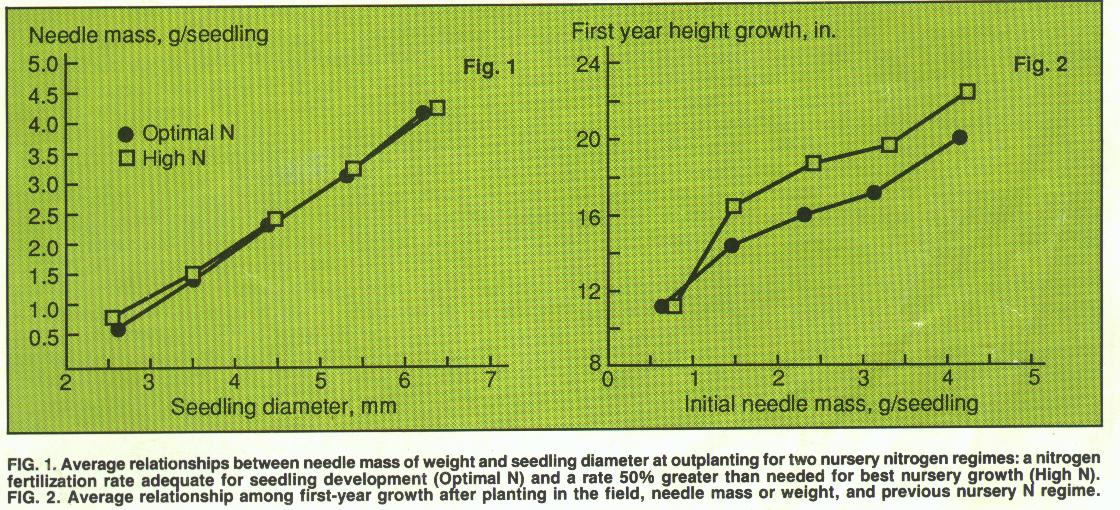
Extra Nitrogen in Pine Nursery Boosts Forest Wood Growth
Blake, J.I.and D.B. South. 1990. Extra nitrogen in pine nursery boosts forest wood growth. Ala. Agr. Exp. Sta. Highlights Agr. Res. 37(2):13.
Improving the growth potential of pine plantations in Alabama is a major goal of research in the Alabama Agricultural Experiment Station. Thus far, a large amount of effort has been devoted to practices which can improve seedling survival. However, significant improvements in tree growth can also be made by subtle manipulations that affect seedling diameter in the nursery. A small increase in the initial diameter of the plants can have a surprisingly large effect on subsequent growth. Not only do the seedlings that start out ahead remain ahead, but the absolute difference in tree volume increases as the trees grow. By increasing the mean root collar diameter of seedlings only 1 mm (millimeter), yields can be increased from 1.5 to 4.5 cords per acre.

The Auburn University Southern Forest Nursery Management Cooperative installed studies throughout the south to determine the combined growth response due to seedling nutrition and seedling morphology. Seedling morphology was altered by growing seedlings in the nursery at various spacings. Seedling nutrition was varied by applying different levels of nitrogen fertilizer (a rate to minimize production of culls and a substantially higher rate). Samples of seedlings were measured for seedling size, nutrient status, and levels of photosynthesis. Other seedlings were out planted in the field to measure growth rate.
Regardless of treatment, as seedling root collar diameter increased, the total quantity of foliage increased, figure 1. This increased foliage mass allows greater light interception and greater photosynthesis and carbohydrate production to occur. As a result, foliage weight was directly related to height growth during the first season after planting.
Applying extra nitrogen fertilizer in the nursery also resulted in increased growth in the field, even when comparing seedlings with the same needle mass, figure 2. Thus, seedling nutrition appears to benefit growth in ways other than simply increasing seedling size. This results from an increase in the rates of photosynthesis of plants with the same amount of needles.
When provided with herbaceous weed control, large diameter seedlings can show a dramatic increase in first-year growth in the field, figure 3. Subsequent observations indicate that the early effects of improved nitrogen nutrition on growth will continue to affect yields as the plantation develops.
